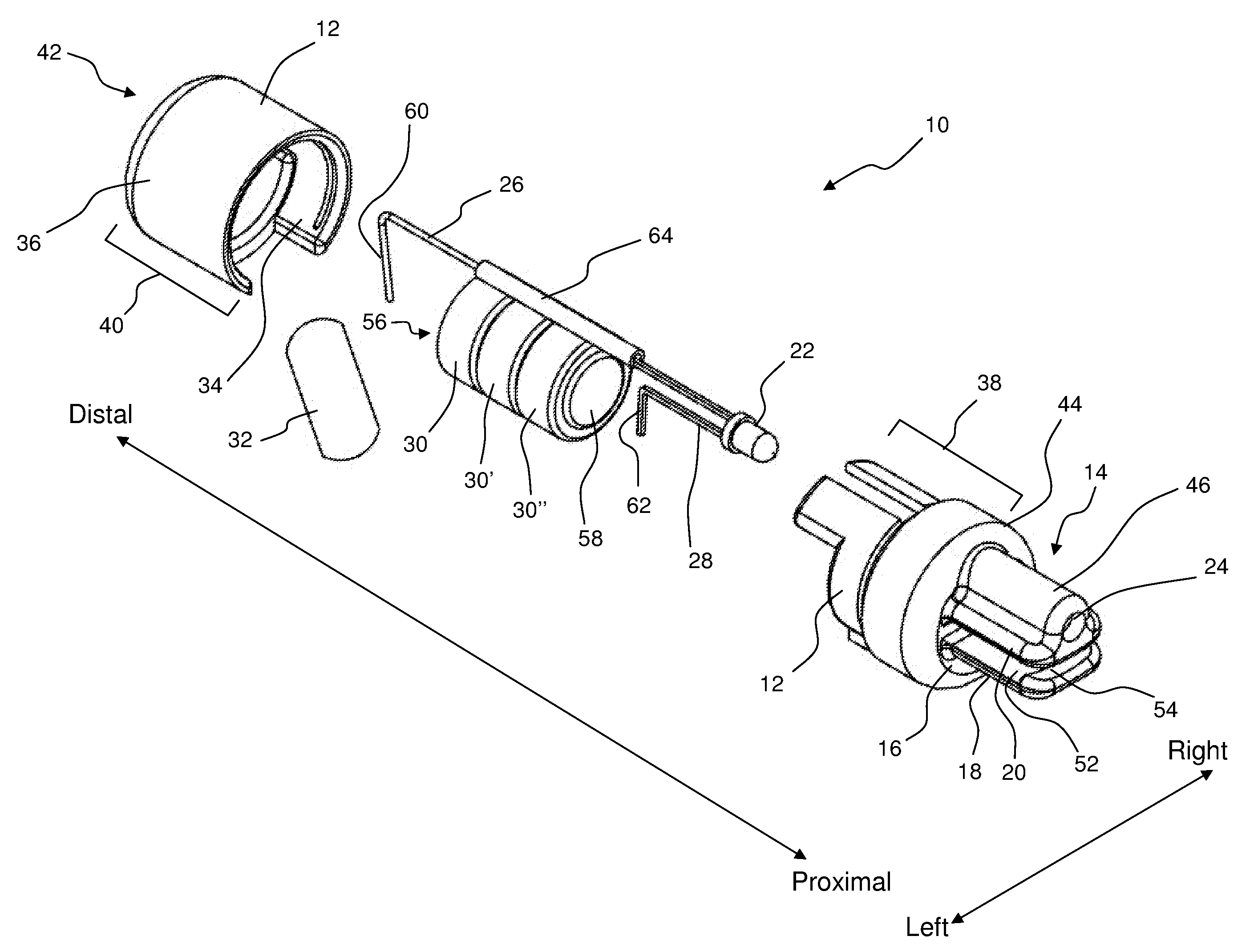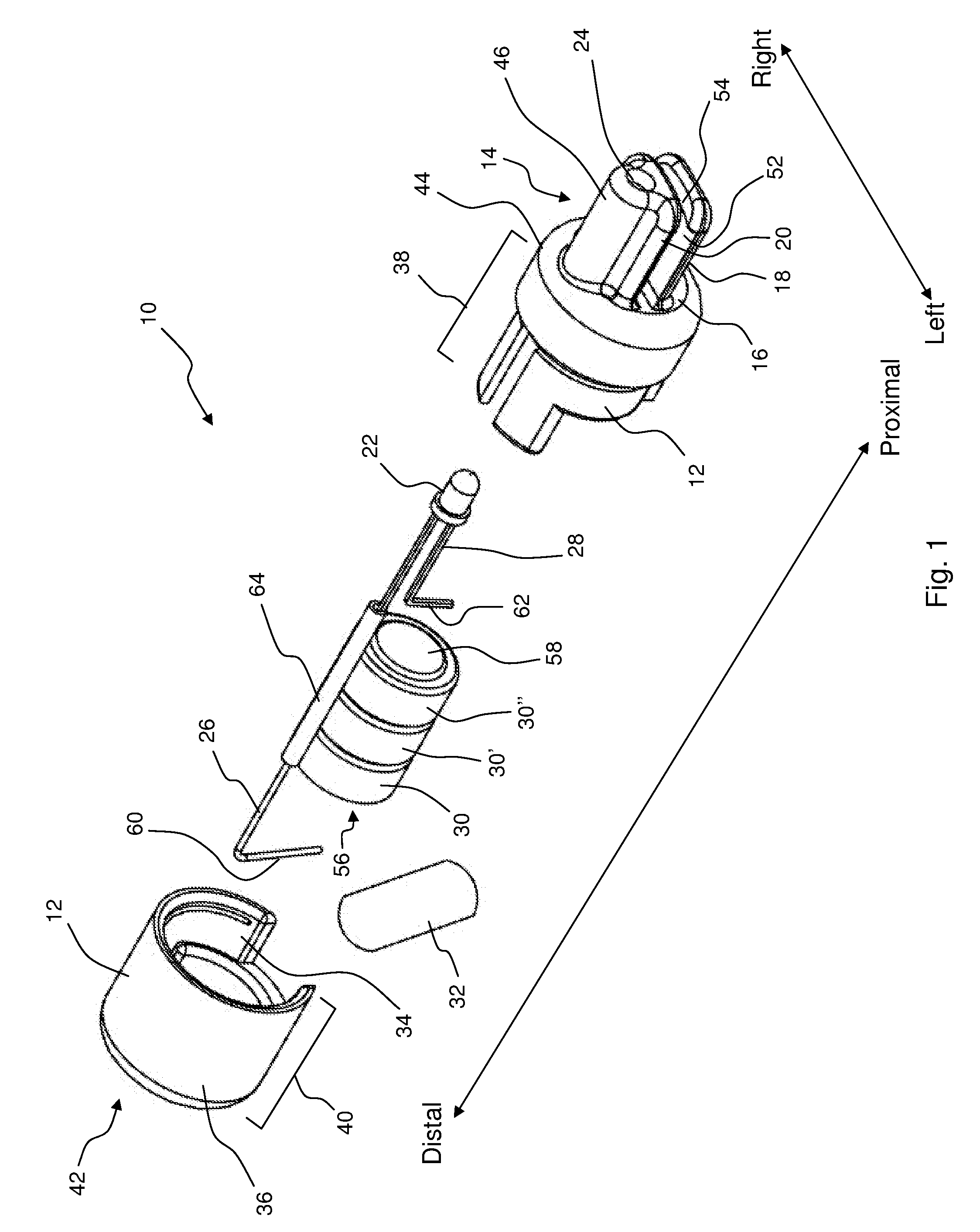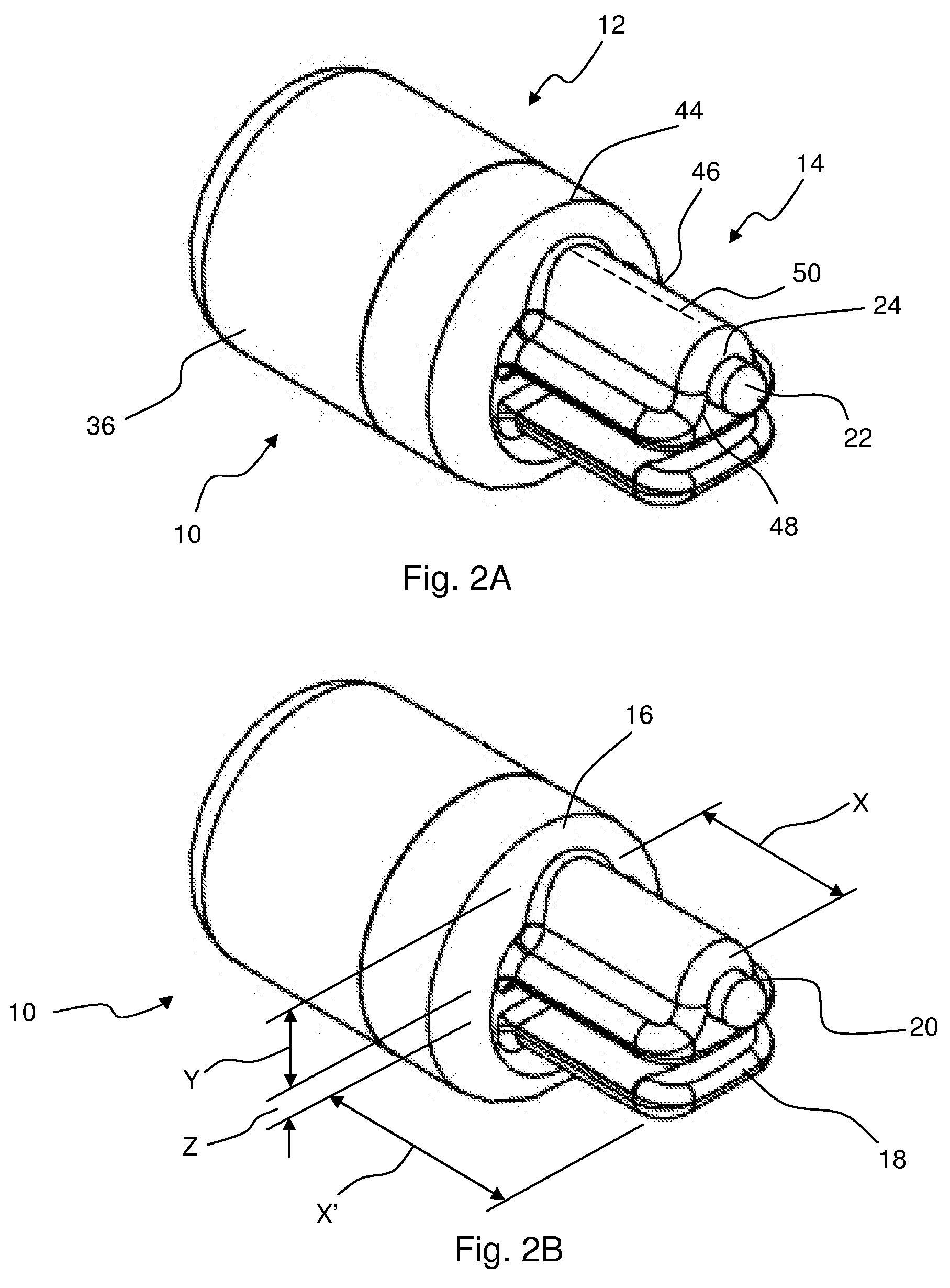Disposable medical-examination light
- Summary
- Abstract
- Description
- Claims
- Application Information
AI Technical Summary
Benefits of technology
Problems solved by technology
Method used
Image
Examples
Embodiment Construction
[0018]The presently preferred embodiments of the described invention may be understood by reference to the following description. It will be appreciated that the components of the described invention, as generally described herein, may be arranged and designed in a wide variety of different configurations. Thus, the following more detailed description of the embodiments of the present invention is not intended to limit the scope of the invention, as claimed, but is merely representative of presently preferred embodiments of the invention. Moreover, while the following discussion focuses on implementing the described invention with a speculum, the skilled artisan will recognize that the described invention may be implemented in any other desired application. For instance, the invention may be attached to any medical device or apparatus to provide localized light. Similarly, while the following description discusses using the described invention to provide light to internal cavities, ...
PUM
 Login to View More
Login to View More Abstract
Description
Claims
Application Information
 Login to View More
Login to View More - R&D
- Intellectual Property
- Life Sciences
- Materials
- Tech Scout
- Unparalleled Data Quality
- Higher Quality Content
- 60% Fewer Hallucinations
Browse by: Latest US Patents, China's latest patents, Technical Efficacy Thesaurus, Application Domain, Technology Topic, Popular Technical Reports.
© 2025 PatSnap. All rights reserved.Legal|Privacy policy|Modern Slavery Act Transparency Statement|Sitemap|About US| Contact US: help@patsnap.com



